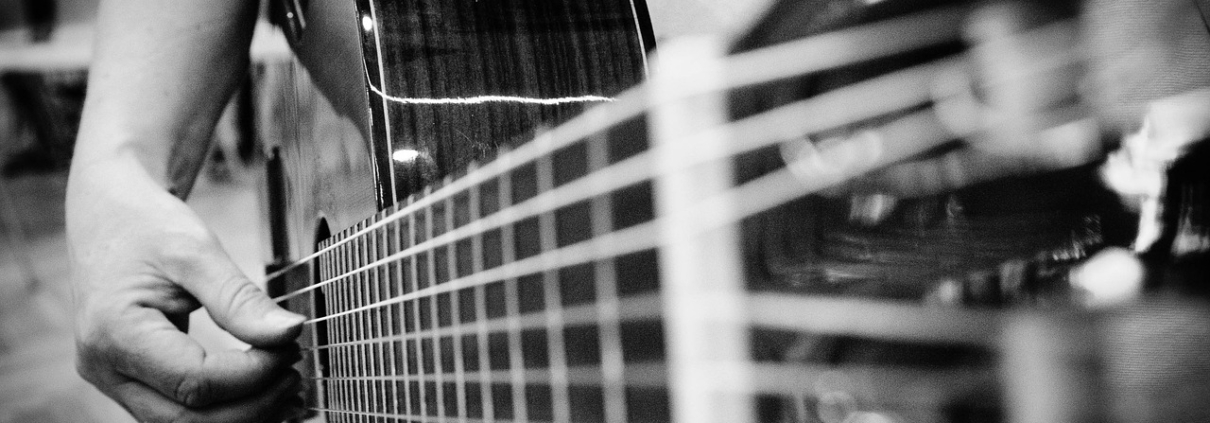The Art of Fingerpicking: A Guitarist’s Guide
In the intricate world of guitar playing, fingerpicking stands out as a technique that adds finesse, depth, and a touch of intimacy to music. This blog post will cast a spotlight on the art of fingerpicking, exploring its rich history, diverse styles, and the unique charm it brings to musical compositions.
A Historical Prelude: Tracing the Origins of Fingerpicking
The roots of fingerpicking can be traced back through the annals of musical history. Emerging from traditional folk and blues, fingerpicking gained prominence in the early 20th century. Influential guitarists like Mississippi John Hurt and Merle Travis played a pivotal role in popularizing this technique, laying the foundation for the diverse fingerpicking styles we appreciate today.
The Artistry of Fingerstyle Technique
Unlike the strumming technique, which employs a pick to strike the strings, fingerstyle relies on the guitarist’s fingertips or fingernails. This nuanced approach allows for greater control over individual strings, enabling the creation of intricate melodies, harmonies, and percussive elements. The result is a more dynamic and expressive form of guitar playing.
Exploring Fingerpicking Styles: From Folk to Flamenco
Folk Fingerpicking
Folk fingerpicking is characterized by its simplicity and melodic clarity. Often associated with acoustic guitars, this style emphasizes the alternating bass technique, creating a steady rhythmic foundation while intricate melodies dance over the top.
Blues Fingerpicking
Rooted in the Mississippi Delta blues tradition, blues fingerpicking involves intricate bending, sliding, and hammer-on techniques. This style often features syncopated rhythms and expressive slides, capturing the soulful essence of the blues.
Classical Fingerstyle
Drawing inspiration from classical music, classical fingerstyle is known for its formal structure and intricate finger movements. This style often involves the use of arpeggios, where individual notes within a chord are played sequentially, creating a flowing and melodic sound.
Flamenco Techniques
Originating from Spain, flamenco fingerpicking is a display of fiery passion and rhythmic complexity. Characterized by fast, percussive strumming and intricate finger movements, flamenco guitarists create a vibrant and energetic sound that is both captivating and technically demanding.
The Contemporary Tapestry: Fingerpicking in Modern Music
Fingerpicking has transcended its traditional roots, finding a comfortable home in contemporary genres. From indie folk to acoustic rock, artists like Nick Drake, Andy McKee, and Tommy Emmanuel have pushed the boundaries of fingerstyle, introduced innovative techniques and expanded the sonic possibilities of the acoustic guitar.
Mastering the Craft: Tips for Aspiring Fingerpickers
Start Slow
Begin with simple patterns and gradually increase complexity as you become more comfortable with fingerpicking.
Focus on Technique
Pay attention to your hand positioning and finger movements. Clean and precise technique is key to mastering fingerstyle.
Experiment with Patterns
Explore different fingerpicking patterns to discover your unique style. Mix and match techniques to create a signature sound.
Listen and Learn
Study the works of renowned fingerstyle guitarists. Listen to a variety of genres to understand the diverse applications of fingerpicking.
Conclusion: Crafting Musical Tapestries with Fingers and Strings
Fingerpicking is more than just a guitar technique; it’s a storytelling method that allows musicians to weave intricate tales through the delicate dance of fingers on strings. Whether you’re drawn to the simplicity of folk or the complexity of flamenco, fingerpicking styles offer a musical journey rich in emotion and artistry. So, pick up your guitar, let your fingers dance, and embark on the enchanting adventure of fingerstyle mastery.
—
Start your musical adventure with a free trial lesson, available online or in-person. Just fill out this form and we’ll get back to you within 24 hours. You’ve got nothing to lose and an amazing musical world to gain. 🙂



